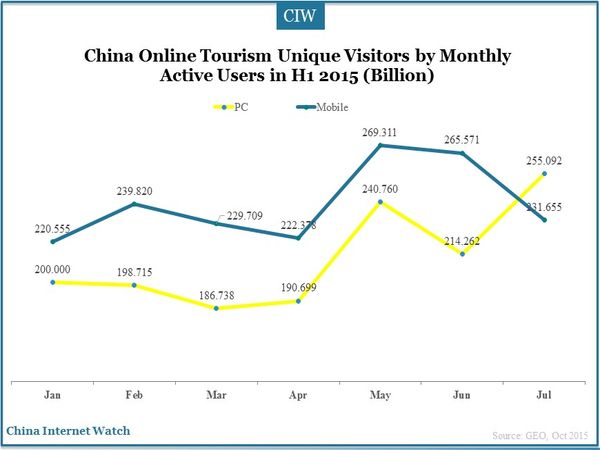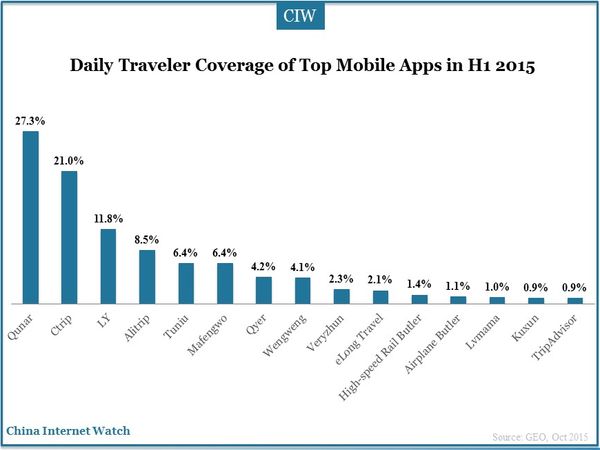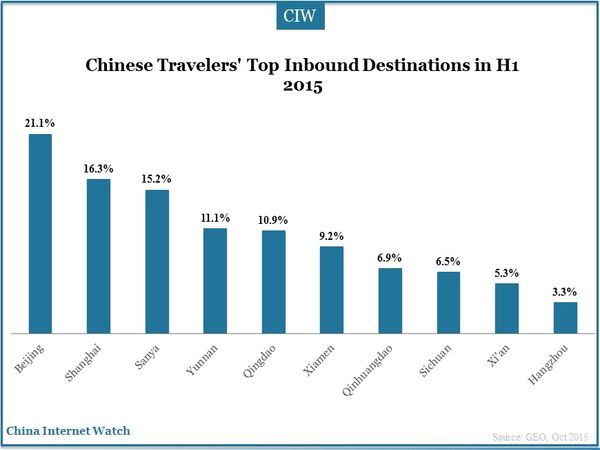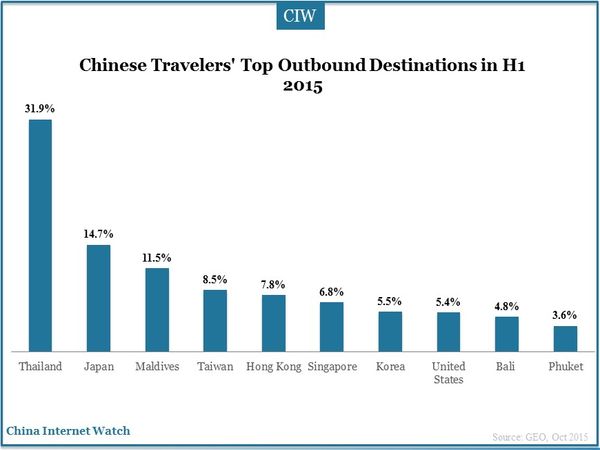
Since January 2015, the number of active users on mobile apps has surpassed that of the PC side, and the gap is gradually increasing. Online travel websites are increasing efforts to transform to mobile end to compete for more users.


Ctrip leads the online tourism market while Qunar attracts more consumers on mobile end, followed by LY, Alitrip and Tuniu.

Now the young travelers are more inclined to self-guided tours and budget tours, which allows a certain market share to relatively small players such as Qyer and Mafengwo. Beijing, Shanghai and Sanya are most popular domestic travel destinations.

Outbound tourism becomes casual for Chinese families owing to the uplift of living standard. Neighboring countries especially some Asian countries are often chosen as outbound travel destinations, such as Thailand, Japan, Maldives, Taiwan, Hong Kong and others. Australia has also been a hot destination for Chinese tourists.
In addition to mobile travel apps, catering apps, such as Meituan and Dianping, are also popular among tourists. Group-buying apps are favorite among catering apps. Map apps are also necessary tools during trips which can greatly facilitate the travelers. They can help to precisely locate position, recommend restaurants, call cars or taxis, food delivery and etc. Baidu Maps has majority market share because of its diverse features and followed by AMAP.
Also read: China Mobile Internet Trend 2015